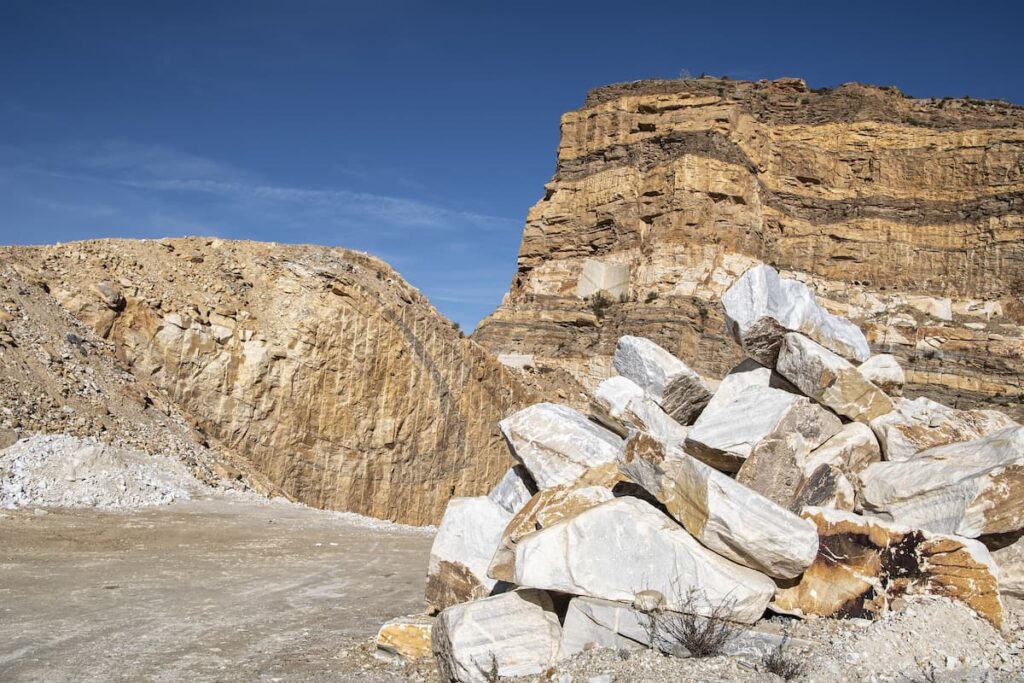In a world striving for security and sustainability, the accurate and reliable estimation of mineral resources plays a pivotal role. Mineral resource estimation (MRE) serves as the cornerstone of responsible mining practices, facilitating informed decision-making for governments, corporations, and communities. By ensuring efficient utilization of the earth’s resources, MRE contributes to reducing environmental impact, promoting economic development, and addressing critical global challenges, including energy security and climate change mitigation.
Understanding Mineral Resource Estimation
Mineral resource estimation is a process that evaluates the size, quality, and value of a mineral deposit. By combining geological, geophysical, and geochemical data, MRE provides a detailed understanding of the deposit’s potential and limitations. This information is critical for:
- Feasibility Studies: Determining whether mining a deposit is economically viable.
- Mine Planning: Designing effective extraction and processing methods.
- Investment Decisions: Offering investors a clear picture of the project’s risks and rewards.
- Regulatory Compliance: Ensuring projects meet local and international standards.
Steps in Mineral Resource Estimation
- Data Collection: Accurate MRE begins with collecting comprehensive data. This includes geological surveys, core drilling results, geophysical mapping, and chemical assays. Advanced technologies such as drones and 3D imaging enhance the accuracy and scope of data collection.
- Data Integration and Analysis: The collected data is integrated and analyzed using specialized software to identify patterns and trends. Techniques like geostatistics and block modeling play a crucial role in this phase, ensuring the resource estimate is both accurate and representative.
- Resource Classification: Mineral resources are classified into categories—measured, indicated, and inferred—based on the level of confidence in the estimate. This classification guides stakeholders in understanding the reliability of the resource data.
- Reporting and Compliance: The results are compiled into a technical report that adheres to industry standards, such as the NI 43-101 in Canada or the JORC Code in Australia. These standards ensure transparency and consistency in reporting, fostering trust among stakeholders.
The Importance of MRE in Global Challenges
1. Supporting Energy Transitions
The shift toward renewable energy sources and electric mobility has intensified demand for critical minerals like lithium, cobalt, and rare earth elements. Accurate MRE is essential to identify and quantify these resources, ensuring a stable supply chain for technologies such as batteries and wind turbines.
2. Reducing Environmental Impact
By providing precise estimates, MRE helps minimize waste and over-extraction, reducing the environmental footprint of mining operations. Additionally, integrating sustainability metrics into resource estimation fosters responsible mining practices.
3. Promoting Economic Development
MRE provides the foundation for developing mining projects that create jobs, stimulate local economies, and generate revenue for governments. In resource-dependent regions, well-planned mining initiatives based on accurate MRE can drive long-term socio-economic benefits.
4. Enhancing Global Security
Mineral resources play a strategic role in national and global security. Accurate estimation ensures efficient utilization and reduces dependency on unstable or hostile regions, fostering geopolitical stability.
Advances in MRE Technology
The field of MRE has witnessed significant technological advancements that enhance the accuracy, efficiency, and sustainability of the process:
- Geospatial Technologies: GIS and remote sensing enable detailed mapping and analysis of mineral deposits.
- AI and Machine Learning: These technologies improve predictive modeling, identifying potential deposits with greater accuracy.
- 3D Modeling Software: Advanced tools provide a visual representation of deposits, aiding in planning and communication.
- Big Data Analytics: Integrating diverse datasets allows for more comprehensive and insightful resource evaluations.
Challenges in Mineral Resource Estimation

While MRE has advanced significantly, it is not without challenges:
- Data Quality: Inconsistent or incomplete data can compromise the accuracy of resource estimates.
- Technological Barriers: Smaller mining companies may lack access to advanced technologies, limiting their ability to conduct detailed MRE.
- Regulatory Complexity: Navigating diverse and evolving regulations across jurisdictions can be challenging.
- Environmental Concerns: Balancing resource extraction with ecological preservation requires meticulous planning and execution.
The Future of MRE
As global demand for minerals continues to grow, the importance of MRE will only increase. Future advancements in technology, coupled with a stronger emphasis on sustainability, will shape the next era of resource estimation. Key trends to watch include:
- Integration of Sustainability Metrics: Embedding environmental and social considerations into MRE processes.
- Decentralization of Technologies: Making advanced MRE tools accessible to a broader range of stakeholders.
- Real-Time Monitoring: Leveraging IoT and cloud technologies for continuous resource assessment.
- Enhanced Collaboration: Encouraging partnerships between governments, corporations, and communities to optimize resource use.
The Broader Implications of MRE
Mineral resource estimation impacts far more than the mining industry. It plays a critical role in ensuring global economic stability, as countries depend on minerals for infrastructure development, technology production, and energy systems. Furthermore, as the world moves toward a circular economy, MRE can guide recycling and reuse strategies by identifying secondary resource potential in waste streams.
In addition, MRE supports disaster risk reduction in mining operations by accurately predicting the geotechnical stability of sites. By understanding potential risks and planning accordingly, companies can safeguard their workforce and local communities while maintaining operational integrity.
Collaborative Approaches to MRE
The complexity of mineral resource estimation calls for a collaborative approach. By integrating insights from geologists, engineers, environmental scientists, and local communities, MRE processes can become more holistic and inclusive. This multi-stakeholder strategy not only improves the quality of resource estimates but also builds trust and transparency in mining operations.
Mineral resource estimation stands at the intersection of science, technology, and sustainability, shaping the future of mining and resource management. By combining precision, innovation, and responsibility, MRE ensures that mineral resources are utilized effectively and ethically. Companies like K-MINE exemplify the integration of expertise and technology in MRE, offering comprehensive solutions that drive informed decision-making and sustainable growth.
